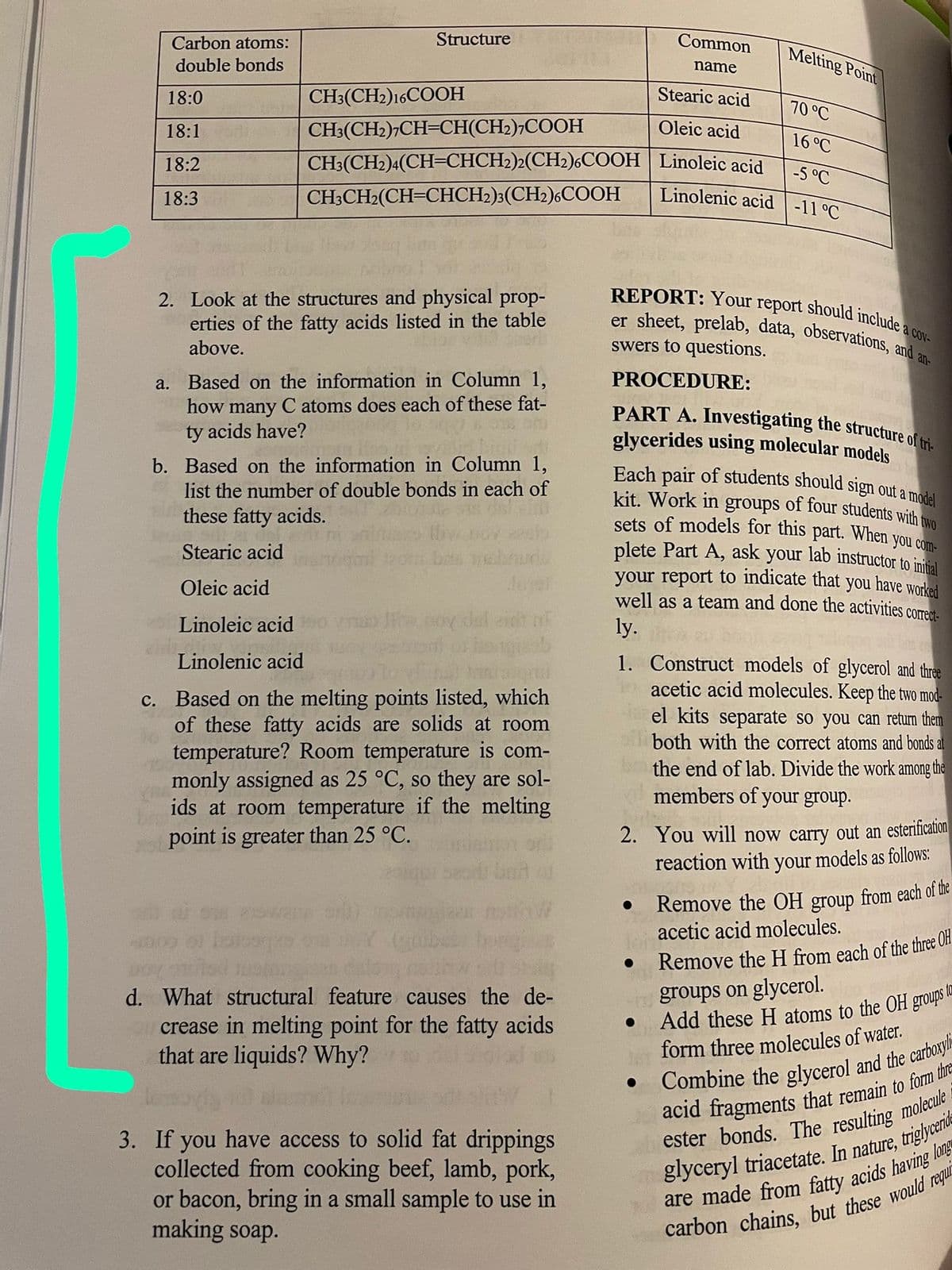2. Look at the structures and physical prop- erties of the fatty acids listed in the table above. a. Based on the information in Column 1, how many C atoms does each of these fat- ty acids have? b. Based on the information in Column 1, list the number of double bonds in each of these fatty acids. Stearic acid Oleic acid Linoleic acid Linolenic acid c. Based on the melting points listed, which of these fatty acids are solids at room temperature? Room temperature is com- monly assigned as 25 °C, so they are sol- ids at room temperature if the melting point is greater than 25 °C. What structural feature causes the de- crease in melting point for the fatty acids that are liquids? Why?
Carbohydrates
Carbohydrates are the organic compounds that are obtained in foods and living matters in the shape of sugars, cellulose, and starch. The general formula of carbohydrates is Cn(H2O)2. The ratio of H and O present in carbohydrates is identical to water.
Starch
Starch is a polysaccharide carbohydrate that belongs to the category of polysaccharide carbohydrates.
Mutarotation
The rotation of a particular structure of the chiral compound because of the epimerization is called mutarotation. It is the repercussion of the ring chain tautomerism. In terms of glucose, this can be defined as the modification in the equilibrium of the α- and β- glucose anomers upon its dissolution in the solvent water. This process is usually seen in the chemistry of carbohydrates.
L Sugar
A chemical compound that is represented with a molecular formula C6H12O6 is called L-(-) sugar. At the carbon’s 5th position, the hydroxyl group is placed to the compound’s left and therefore the sugar is represented as L(-)-sugar. It is capable of rotating the polarized light’s plane in the direction anticlockwise. L isomers are one of the 2 isomers formed by the configurational stereochemistry of the carbohydrates.

Trending now
This is a popular solution!
Step by step
Solved in 4 steps




